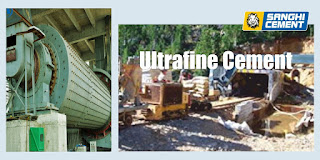Thermal Bridging in Building
Thermal
bridging is the movement of heat across an object that is more conductive than
the materials around it. The conductive material creates a path of least
resistance for heat. Thermal bridging can be a major source of energy loss in
homes and buildings, leading to higher utility bills.
Thermal
bridging generally occur when there is a break in or penetration of the
building envelope. Thermal bridging can occur by the junctions between the wall
and floor, the junctions between the wall and roof, holes in the building
envelope for pipes and cables, window and door revels and sheet wall ties used
in masonry construction.
It
can increase the risk of condensation on internal surfaces and even cause
interstitial condensation within walls and other building elements.
Condensation forms when the interior temperature dips well below the dew point
and moisture in warm air condenses into water droplets on cooler surfaces. In
addition to heat transfer, if the indoor environment is not adequately
vented, thermal bridging may cause the brick material to absorb
rainwater and humidity into the wall, which can result in mould growth and
deterioration of building envelope material.
So,
thermal bridges should be avoided whenever possible. Proper planning, design
and construction are essential to help identify and remedy thermal bridges.
Care should be taken to ensure thermal bridging are not created at any point
during the entire construction process.
There
are some different kind of thermal bridging occur.
Repeating
Thermal Bridges: This kind of thermal bridges follow a pattern and are
“repeated” over an entire area of building’s thermal envelope. Repeating
thermal bridges are both common and predictable, but can still cause a
significant amount of heat loss. Therefore, this type of thermal
bridge must be included in the U-value calculation and accounted for during
planning, design and construction.
Non-Repeating
Thermal Bridges: These thermal bridges occur periodically and are found
where there’s a break in the continuity of the building’s thermal
envelope. Non-repeating thermal bridges can also occur when materials with a
different thermal conductivity meet to form part of the envelope.
Geometrical
Thermal Bridges: Geometrical thermal bridges are indeed caused by the
geometry of the building. Geometrical thermal bridges occur more frequently
with complex building forms, so it’s best to keep the overall design as
simplistic as possible to reduce their occurrence.
There
are products and systems designed to help eliminate thermal bridging at common
junctions, like an insulated foundation system. These passive
foundation systems can help to eliminate the wall to floor cold bridge by wrapping the
entire foundation in a layer of EPS, ensuring there are no breaks in the
continuity of insulation. External wall insulation systems can also be
extremely effective at minimising cold bridging.
--------------------------------------------------------------------------------------------------------
Like us on Facebook :- https://www.facebook.com/SanghiCement
Follow us on Linkedin :- https://www.linkedin.com/company/sanghi-industries-ltd
Subscribe us on Youtube :- https://www.youtube.com/SanghiIndustries-Ltd
For any Inquiry visit :- http://www.sanghicement.com/inquiry-form
Contact us on Whatsapp :- +91-79-26838000
--------------------------------------------------------------------------------------------------------
To read more interesting blogs,
Subscribe us on
Blog
written by
Shruti Doshi
Technical
Officer – Sanghi Cement & Blogger
Blog
Managed by
Nirav
Pandya
Digital
Marketing Officer – Sanghi Cement



Comments
Post a Comment